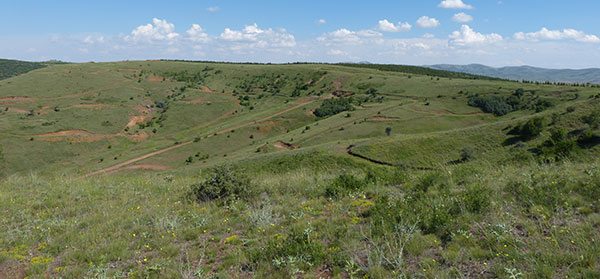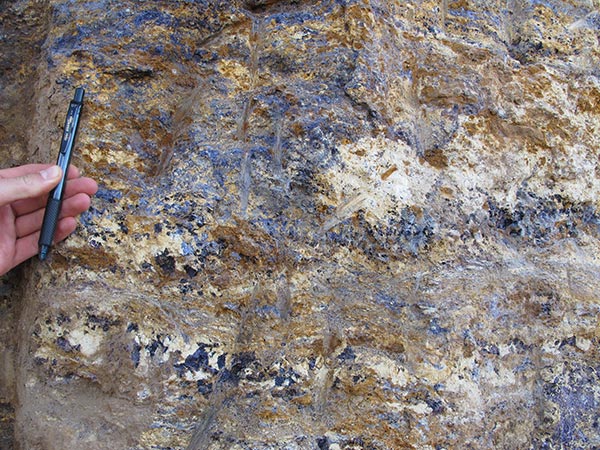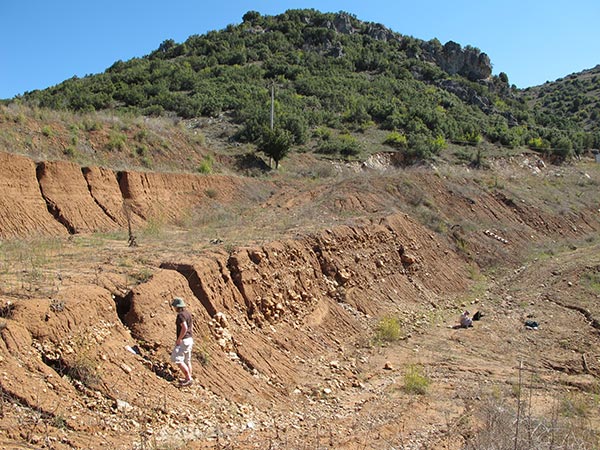REE mineralisation in Turkey
In Turkey, exploration for REE has a long history with reports from the American Geological Survey Bulletin dating back to the early 1970s. Although this has not yet resulted in production, the deposit that is closest to being developed occurs in the Aksu Diamas region where the Çanakli heavy mineral sands are in the pre-feasibility stage of development.
Geology of Turkey
The geology of Turkey comprises several different terranes that were juxtaposed during numerous Phanerozoic subduction-accretion events. Subduction and terrane accretion continues today in the Mediterranean region. There are three main terranes: the Pontides to the north, the Anatolide-Tauride terrane in the south and the central Anatolian crystalline complex, or Kirşehir Massif, which lies between the two main terrane blocks. These terranes are now joined along multiple continental scale sutures that extend from the Himalayas to the east to Morocco in the west to form the eastern Mediterranean region as we now know it. These terranes were originally separated from each other by oceans, relicts of which, in the form of ophiolites and accretionary prisms, comprise a large part of the geology of Turkey.
During the Cenozoic, crustal extension in a back-arc basin setting in the Aegean-Anatolian region led to several episodes of magmatic activity, with initial calc-alkaline magmatism becoming more alkaline with time.
REE mineralisation
REE mineralisation in Turkey is associated with Cenozoic alkaline volcanism. In the Kizilcaören area, mineralisation is linked with Pliocene alkali volcanism (trachytes, phonolites and carbonatites). REE mineralisation, bastnäsite, is in association with fluorite and barite. Heavy mineral deposits have been prospected for at Sivrihisar (in the form of bastnäsite) which is in the vicinity of the Kizilcaören deposit.
In the Ağlasun region of the Burdur province, previous exploration by AMR Mineral Metal Inc (AMR) identified alluvial placers with significant concentrations of heavy minerals. These heavy minerals are probably derived from the Pliocene Gölcük alkaline volcanic centre which is situated approximately 8 km north west of the Çanakli prospect area. The mechanism by which these heavy mineral concentrations have formed is an area of active research.
Other REE-bearing deposits occur across the country, although these are generally less well researched. These include the Late Cretaceous Sofular carbonatite complex in the east of Turkey, which hosts fluorite and britholite-(Ce). In the north of the country on the shores of the Black Sea, additional monazite-bearing heavy mineral deposits have been identified at Karasu and prospection for additional resources has been carried out along the coast of the Black Sea at Melen and Ünye. Elevated REE mineralisation in karst bauxite deposits has been identified in multiple deposits in the Baltic region and in Greece. It is thought that the Mortaş and the Doğankuzu bauxites in the Seydişehir region could be potential bearers of REE.
Key references
The following literature represents a non-exhaustive list of papers relevant to the geology and REE mineralisation of the region.
Deady, E A, Mouchos, E, Goodenough, K M, Williamson, B J, Wall, F. 2016. A review of the potential for rare-earth element resources from European red muds: examples from Seydisehir, Turkey and Parnassus-Giona, Greece. Mineralogical Magazine 80, 43–61.
Cox, J J. 2013. RPA, 2013: NI 43-101 Technical Report on the Aksu Diamas Rare Earth Element Project, Isparta district, Turkey.
Kupfahl, H G. 1954. Geological report of the Eskişehir and Sivrihisar districts. Mining Exploration Institute of Turkey, Report No. 2247, Ankara.
Leo, G W, Marvin, R F, and Mehnert, H H. 1974. Geological framework of Kuluncak-Sofular area, east-central Turkey, and K-Ar ages of igneous rocks. Geological Society of America, Bulletin 85, pp.1785–1788.
Muzaffer Karadağ M, Küpeli Ş, Ark F, Ayhan, A, Zedef V, and Döyen A. 2009. Rare earth element (REE) geochemistry and genetic implications of the Mortas — bauxite deposit (Seydis-ehir/Konya –SouthernTurkey). Chemie der Erde 69 143–159.
Ozgenc I. 2000. Characteristics of Turkish carbonatites. Carbonatite Workshop, 2000. Journal of African Earth Science A-28.
Robertson, A H F, Parlak O, and Ünlügenç U C. 2013. Geological Development of Anatolia and the Easternmost Mediterranean Region. Geological Society, London, Special Publications, 372.
Sarıfakıoğlu E, Ozen H, and Hall C. 2009. Petrogenesis of extension-related alkaline volcanism in Karaburhan (Sivrihisar–Eskisehir), NW Anatolia, Turkey. Journal of Asian Earth Sciences 35. pp.502–515.
Stumpfl E F, and Kirikoglu, M S. 1985. Fluorite-Barite-Rare Earths Deposits at Kizilcaoren, Turkey Mitt, Österr. Geol. Ges. 78 193–200 5 Abb., 2 Tab.




